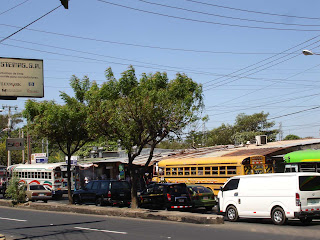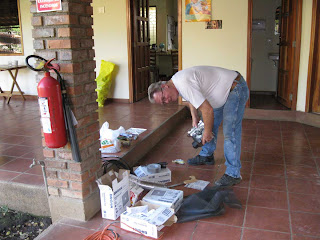It’s February 2011 and I have just returned from my fourth trip to Nicaragua, the last fact-gathering trip before book publication.
I open my suitcases, still streaked with Nicaragua’s ubiquitous dry-season dust, and discover that, despite cushions of newspaper and clothes, one of the three ceramic butterflies has cracked in half during the flight.
I’m sad. Out-of-proportion sad.
Ever since a butterly alighted on my wrist during outdoor morning meditation, butterflies have been a resonant image for me. A three-foot silk butterfly that emerged from its cocoon week-by-week in our church sanctuary during a fruits-of-the-spirit sermon series, now hangs in my sun porch.
On this latest Nicaragua trip, I admired the ceramic butterflies perched on cement toadstools in the courtyard of Managua’s Nehemiah Center, and asked where I could purchase them. Juan Granado, the center’s business manager, told me that crafts people made them at Masaya, an hour or so to the southeast. “Great!” I said. “Our team is travelling there next Friday.”
The following Monday, however, a proudly smiling Juan presented me with three ceramic butterflies. He reassured me that he did not make a special trip. He was passing Masaya on the weekend to visit relatives, and stopped for them.
I was touched. I had only a nodding acquaintance with Juan. I was quite certain that, as a percentage of income, those butterflies cost him more they would have cost me. I asked if I could reimburse him for the cost. No, he insisted, they were a gift. It was his pleasure. Truly.
The moment etched itself in gold letters on my heart. I thanked him profusely. I wrote him a thank-you card.
Juan, I learned later, had purchased and placed the butterfly-and-toadstool ornaments I had admired in courtyard just prior to my arrival—to varied reactions from the staff members. The Nicaraguan staff had thought they were a wonderful focal point. The North Americans had been a little less enthusiastic.
My admiration had validated Juan’s taste.
I was told about this varied reaction when our church service-and-learning team decided to investigate distributing these yard ornaments in the U.S as a fundraiser.
And now, this butterfly--hand-painted in vibrant Latino colors, an unexpected gift, an emblem of different cultural tastes, a harbinger of future hopes--has lost its wing.
Marlo, my solution–oriented, engineer husband, picks up the pieces, nests them together, turns them over, and pronounces the wing repairable “I can glue it and reinforce the bottom with a metal strip,” he says. “From above, it will hardly show.”
My butterfly can be transformed.
If only a little glue and a strip of metal could transform Nicaragua.
Or, for that matter, North America.
That task belongs to Bigger Hands.
And in those hands, perhaps I can be just one glue-drop of the change I hope to see.
That task belongs to Bigger Hands.
And in those hands, perhaps I can be just one glue-drop of the change I hope to see.







































